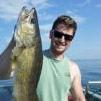Audit Push: Time To Act!
-
Your Responses - Share & Have Fun :)
-
By JerkinLips · Posted
I moved the clips on the jet needles up to the top groove to lean it out. This eliminated the mid-range bog and the sled accelerates well even when warm. The plugs are not quite dark now, but look good. I'll have to rebuild the Mikuni carbs this summer for the permanent solution. I'll also repair or replace the primary clutch to eliminate that issue. Thanks for all of the suggestions. -

By monstermoose78 · Posted
Hmmm must be my phone -

By smurfy · Posted
🤣👍 kettle might have this dating thing...or first date thing all wrong.......first question he should ask the cute little lady is if she knows how to clean fish and clean mallards!!!😉👍🤣 -

-

-

By Wanderer · Posted
No. I tried posting a 15 second video a while back in the accepted MP4 format and it wouldn’t play. It sucks. -

By monstermoose78 · Posted
Could you guys see the video -

By smurfy · Posted
I've seen that!🤣 -
.thumb.jpg.5c1a86e9339e49e53f5bfefed2220054.jpg)
By LakeofthewoodsMN · Posted
On the South Shore... There is still some ice fishing taking place by some hardcore ice anglers, but most have called it a good year. For those still getting out on the ice, fishing has been good. Most resort ice accesses have been closed for the year. Safety first always. Ditches are running along the south end of the lake which means water is running into the bays. Moving water will soon pop open the bays and anglers will be out open water targeting huge pike while they head to spawning areas. Pike fishing is year round on Lake of the Woods and can be excellent during the spring in back bays. On the Rainy River... Spring open water fishing began over a week ago and has started out very good with some big walleyes being caught and released! As of April 8th, the Rainy River is open to the west of Baudette and gaining every day. With warm temps in the weekly forecast, not only will the ice deteriorate quickly, but the walleye bite should get even better. Weather forecast in the next week shows 60's. There are three boat ramps open. The Nelson Park boat ramp in Birchdale, the Frontier Access (about 8 miles to the west of Nelson Park) and the Vidas boat ramp just east of Clementson and the Rapid River. Most walleye anglers are jigging with either plastics or minnows. Use bright plastics such as chartreuse, orange, pink and white. Some are slowly drifting a jig with a minnow such as emerald shiners, fatheads or rainbows. Trolling crankbaits against the current is also effective and will catch fish. This is also a good technique to cover water if you are not on fish. Rainy River walleye fishing is catch and release from March 1st through April 14th on Four Mile Bay and the Rainy River. Initial reports for sturgeon are also good. Anchored up in a hole or on the slope of a hole with a no roll sinker and sturgeon rig is the ticket. A sturgeon rig is about an18 inch leader with a 3/0 or 4/0 circle hook loaded with crawlers or crawlers and emerald shiners. Here are the seasons for sturgeon fishing... -Catch and Release Season: May 8th – May 15th and October 1 – April 23rd. -Harvest Season: April 24th – May 7th and July 1 – September 30. -Closed Season: May 16th – June 30th. Up at the Northwest Angle... It has been a great ice fishing year up at the Angle. While there are a few locals still getting out, resorts have pulled off their fish houses and called it a year. There are many areas showing open water primarily where there is current. Progress to open water is being made. The walleye and sauger season is open through April 14th. Pike fishing never closes, and perch and crappie remain open year-round as well. You can fish for sturgeon through May 15th. -

By Kettle · Posted
If you stop by Kramer lake on 38 north of Rapids someone made a chair out of a hospital commode and a lunch tray. Been there for 20 years.
-

Recommended Posts
Join the conversation
You can post now and register later. If you have an account, sign in now to post with your account.
Note: Your post will require moderator approval before it will be visible.